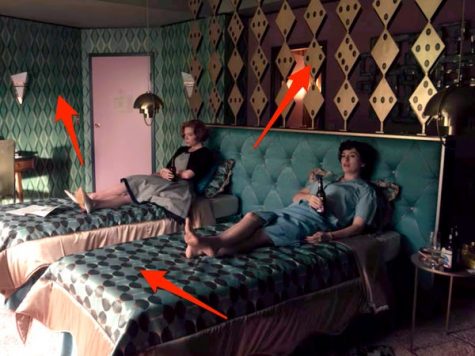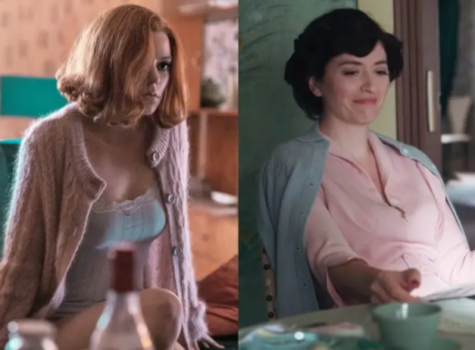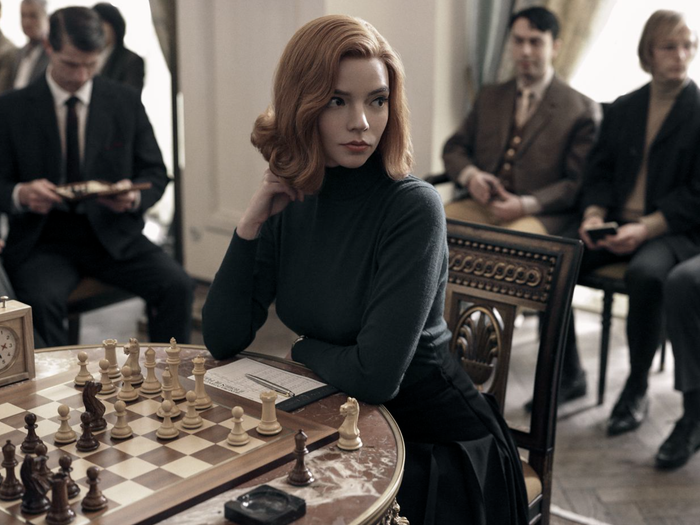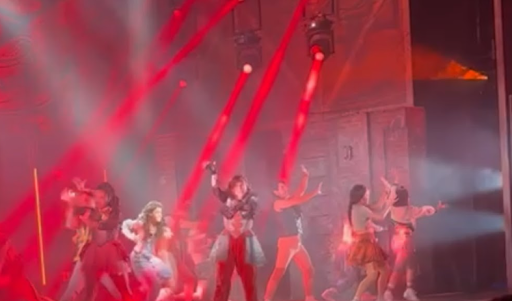Queen’s Gambit: The Stunning & Calculated Set Design and Wardrobe
January 11, 2021
By Anjali Shah
***Warning: The following article contains spoilers for The Queen’s Gambit.
The beautiful and intuitive set designs and costumes in Scott Frank and Alan Scott’s The Queen’s Gambit are no accident. Set in the late 1950s and the 1960s, the show does an impeccable job of transporting its audience back in time through its ornate costumes and detailed sets. The Queen’s Gambit follows Beth Harmon, a young orphaned girl, through her journey as she realizes she is a chess prodigy. Beth is then adopted by the Wheatly family and cared for by Alma Wheatly.

Each costume was carefully crafted and calculated to have meaning, alongside the designs of the interiors of the buildings and Mrs. Wheatley’s house. Insider took a look into the hidden meanings behind some of the set designs. In many of the hotels that Beth and her mom stay at during her chess tournaments, chess-themed wallpapers and decorations line the walls of their hotel rooms. In her final tournament in Moscow, Uli Hanisch, production designer, stated that he wanted to transform the hotel into “a temple to chess” (Curbed). Insider’s article observes that this is the only time spectators are watching Beth play from an elevated perspective. This, in combination with the black and white theme of the hotel decor, “makes viewers feel as though they themselves are watching a chess match inside a chess match.” Hanisch also told Architectural Digest that their aim was to make each location blatantly apparent by including stereotypes for each city. Beth’s Paris hotel room was elegant and lady-like, her Las Vegas room was casino themed, and her experience in Moscow, Russia was accompanied by dark reds, whites, and blacks.

The use of color was not only considered in the backdrop of the show but themed throughout Beth’s wardrobe. Green was a specifically important color throughout the show, symbolizing Beth’s addiction. This is first introduced through the tranquilizer pills she is given as a young child, which are light and dark green. In her match against Borgov in Paris, Beth is pictured wearing a dress with the same color scheme, representing her struggle with addiction at that time (Insider). Following her loss against Borgov and the loss of her mother in Paris, Beth spirals into a dark place, relying on pills and alcohol to keep her alive. In these scenes, Beth wears a pastel pink and blue, two colors that are quite often worn by her mother who is seen constantly drinking throughout the series. Not only do the color choices of her outfit symbolize her mirroring her mother’s addictive nature, but hint at the idea that Beth is grieving her mother’s death. As Beth approaches her final match against Borgov in Russia, her dress gives a nod to her humble beginnings. The simple pale green collared dress she wears during the match mirrors that which she wore at the beginning of the series after her mother dies. While the color is symbolic of her beginning, it also represents her homecoming and strength. This only continues as she is seen in an all-white piece at the end of the series after she becomes a chess grandmaster. Her head-to-toe white wardrobe is supposed to make her appear as the white queen chess piece, symbolizing her power and intelligence. In an interview with Vogue, Gabriele Binder, the show’s wardrobe designer stated that “The idea, of course, is to convey that she is now the queen on the chessboard and the chessboard itself is the world.”
The Queen’s Gambit does an outstanding job of including the meaning behind each and every choice of clothing and set design. Hidden meanings of the set and wardrobe are woven throughout the series, making it even more captivating to watch.










